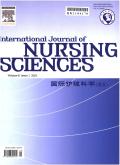Latent profiles of ambivalence over emotional expression in young breast cancer patients: A cross-sectional study
IF 3.1
3区 医学
Q1 NURSING
引用次数: 0
Abstract
Objectives
This study aimed to classify young breast cancer patients into distinct ambivalence over emotional expression and to explore the factors influencing the level of ambivalence over emotional expression.
Methods
A total of 217 young breast cancer patients were enrolled from a tertiary Grade A oncology hospital in Tianjin, China, using the convenience sampling method. All participants completed the general questionnaire, Ambivalence over Emotion Expression Questionnaire (AEQ), and Family Adapt-Ability and Cohesion Evaluation Scales-Chinese Version (FACES-CV). We employed exploratory latent profile analysis for ambivalence over emotional expression profiling and logistic regression analysis to identify the influential factors
Results
The results of the latent profile analysis supported the models of four latent profiles, which were defined as “low conflict-low expression reflection” (19.2 %), “high conflict-high inhibition expression” (43.9 %), “moderate conflict-high regret expression” (18.1 %), and “moderate conflict-desire understand” (18.8 %). Logistic regression revealed that family cohesion, marital status, residence, per capita monthly income, and cancer stage were the influencing factors of ambivalence over emotional expression in young breast cancer patients (P < 0.05)
Conclusions
Levels of ambivalence over emotional expression ameast cancer patients with breast cancer were highly heterogeneous. Medical staff should provide psychological counseling and health education tailored to the unique characteristics of emotional expression ambivalence in different patient groups to promote healthy emotional expression among patients.
年轻乳腺癌患者情绪表达矛盾心理的潜在特征:一项横断面研究
目的将年轻乳腺癌患者分为不同的情绪表达矛盾心理类型,探讨影响情绪表达矛盾心理水平的因素。方法选取天津市某三级甲等肿瘤医院年轻乳腺癌患者217例,采用方便抽样方法。所有被试均完成一般问卷、情绪表达矛盾心理问卷(AEQ)和家庭适应能力与凝聚力评价量表(FACES-CV)。研究结果支持“低冲突-低表达反思”(19.2%)、“高冲突-高抑制表达”(43.9%)、“中度冲突-高后悔表达”(18.1%)和“中度冲突-渴望理解”(18.8%)4种潜在特征模型。Logistic回归分析显示,家庭凝聚力、婚姻状况、居住地、人均月收入、肿瘤分期是影响青年乳腺癌患者情绪表达矛盾心理的因素(P <;结论乳腺癌患者情绪表达矛盾心理水平具有高度异质性。医务人员应针对不同患者群体矛盾情绪表达的独特特点,提供心理咨询和健康教育,促进患者健康的情绪表达。
本文章由计算机程序翻译,如有差异,请以英文原文为准。
求助全文
约1分钟内获得全文
求助全文
来源期刊

International Journal of Nursing Sciences
Nursing-Nursing (all)
CiteScore
6.10
自引率
2.60%
发文量
408
审稿时长
25 days
期刊介绍:
This journal aims to promote excellence in nursing and health care through the dissemination of the latest, evidence-based, peer-reviewed clinical information and original research, providing an international platform for exchanging knowledge, research findings and nursing practice experience. This journal covers a wide range of nursing topics such as advanced nursing practice, bio-psychosocial issues related to health, cultural perspectives, lifestyle change as a component of health promotion, chronic disease, including end-of-life care, family care giving. IJNSS publishes four issues per year in Jan/Apr/Jul/Oct. IJNSS intended readership includes practicing nurses in all spheres and at all levels who are committed to advancing practice and professional development on the basis of new knowledge and evidence; managers and senior members of the nursing; nurse educators and nursing students etc. IJNSS seeks to enrich insight into clinical need and the implications for nursing intervention and models of service delivery. Contributions are welcomed from other health professions on issues that have a direct impact on nursing practice.
 求助内容:
求助内容: 应助结果提醒方式:
应助结果提醒方式:


